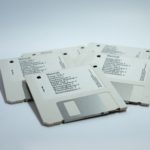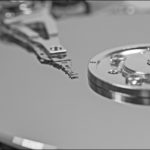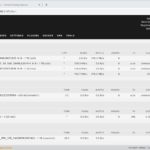Seagate’s IronWolf 510 NVMe SSD is a fast reader with an excellent endurance rating, but it’s a very slow, albeit hyper-steady writer. When I say slow, I’m talking less than 1GBps for the 1.92TB capacity I tested. If you read the specs from Seagate’s website, that’s exactly what it’s rated for.
For PCs, writing this slow would be a buy-me-not issue. However, with the NAS boxes this drive is intended for, it’s not a problem. Even supposing a 10Gbps Ethernet connection, the pipe feeding NAS boxes is limited to around 1GBps. Ergo, the IronWolf 510’s sustained write speed is plenty fast enough for its intended role.
There’s a caveat concerning capacity though. The same spec table rates the 480GB IronWolf 510 for 600MBps writing and the 240GB capacity for 290MBps. Those drives could bottleneck anything less than a 10Gbps network connection.
Specs
The IronWolf 510 is a double-sided (stacked TLC/3-bit NAND on both sides) NVMe, x4 PCI 3 SSD available in 240GB, 480GB, 960GB, and 1920GB capacities. Those capacities, rather then 256GB, 512GB, etc. mean that the drives are heavily over-provisioned. I.e., there’s a lot of NAND set aside for replacing worn out blocks. Indeed, the drives are rated for 435TBW for every 240GB of capacity, roughly three times the rating of end-user drives They are also covered by a five-year warranty and a three-year data recovery plan. Nice.
Pricing is, of course, matched to the extended support and TBW ratings with the 1.92GB drive weighing in at not inconsequential $450, and the 480GB at $240 on Amazon at the time of this writing. You’re paying for peace of mind over the long haul.
Performance
I gave away most of this part of the story in the opening paragraph. As you’ll see below, the IronWolf 510 aced the read tests. They’re as good as you’ll see from a PCIe 3 SSD. The write performance on the other hand, can only be described as turtle-like. Even though there’s a DRAM on board, it’s almost as if the drive is primarily writing directly to the NAND. Slow but super steady.
For whatever the reasons, the IronWolf 510 is perfectly matched in performance to the limitations of the common NAS box. Perhaps the extra cycles are used for advance error correction.

As you can see below, a long 450GB write to the IronWolf 510 hardly budges from a solid near-900MBps. The little blip at the beginning of the copy is due to data cached by Windows 10.

Performance testing was done on a late-generation Ryzen with 32GB of DDR4, and a Samsung 970 SSD feeding files.
Great as NAS cache
The IronWolf 510 is quite well-suited for write-few, read-many scenarios and relatively slow network pipe that is the world in which most NAS boxes live. That said, I’d steer clear of the lower capacities unless you’re using slower 2.5Gbps or 1Gbps connections. Regardless, a long-lived SSD with nice support for a NAS box seeing lots of read transactions.










